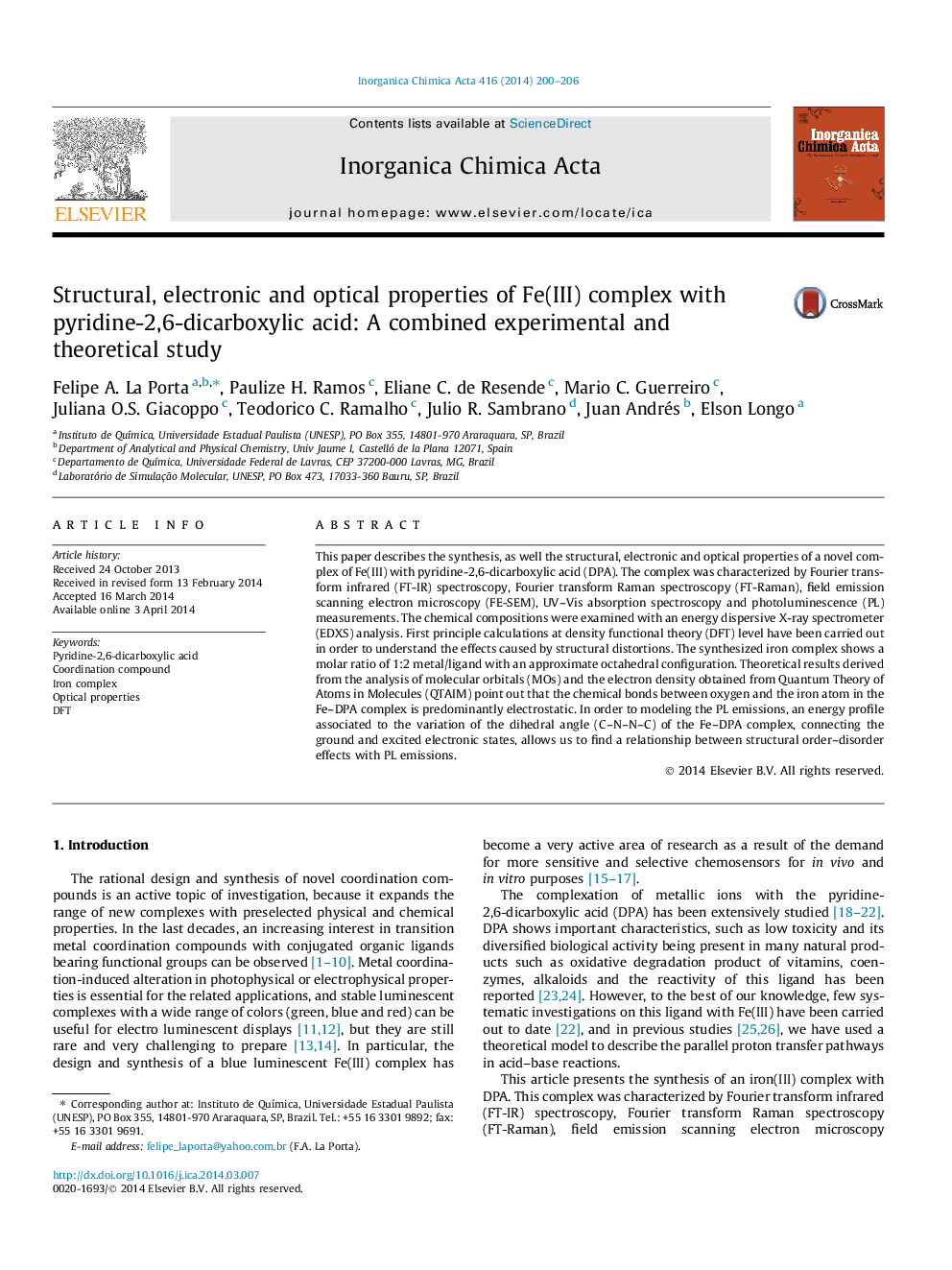| Article ID | Journal | Published Year | Pages | File Type |
|---|---|---|---|---|
| 1309970 | Inorganica Chimica Acta | 2014 | 7 Pages |
•A novel Fe(III) complex with pyridine-2,6-dicarboxylic acid at room temperature.•The structure, surface, chemical composition and optical properties were studied.•The PL analysis is used to evaluate the structural order–disorder of materials.
This paper describes the synthesis, as well the structural, electronic and optical properties of a novel complex of Fe(III) with pyridine-2,6-dicarboxylic acid (DPA). The complex was characterized by Fourier transform infrared (FT-IR) spectroscopy, Fourier transform Raman spectroscopy (FT-Raman), field emission scanning electron microscopy (FE-SEM), UV–Vis absorption spectroscopy and photoluminescence (PL) measurements. The chemical compositions were examined with an energy dispersive X-ray spectrometer (EDXS) analysis. First principle calculations at density functional theory (DFT) level have been carried out in order to understand the effects caused by structural distortions. The synthesized iron complex shows a molar ratio of 1:2 metal/ligand with an approximate octahedral configuration. Theoretical results derived from the analysis of molecular orbitals (MOs) and the electron density obtained from Quantum Theory of Atoms in Molecules (QTAIM) point out that the chemical bonds between oxygen and the iron atom in the Fe–DPA complex is predominantly electrostatic. In order to modeling the PL emissions, an energy profile associated to the variation of the dihedral angle (C–N–N–C) of the Fe–DPA complex, connecting the ground and excited electronic states, allows us to find a relationship between structural order–disorder effects with PL emissions.
Graphical abstractThese findings confirm that PL phenomenon in Fe–DPA at room temperature is directly influenced by this structural and electronic disorder that yields discrete levels in the forbidden band gap region.Figure optionsDownload full-size imageDownload as PowerPoint slide
